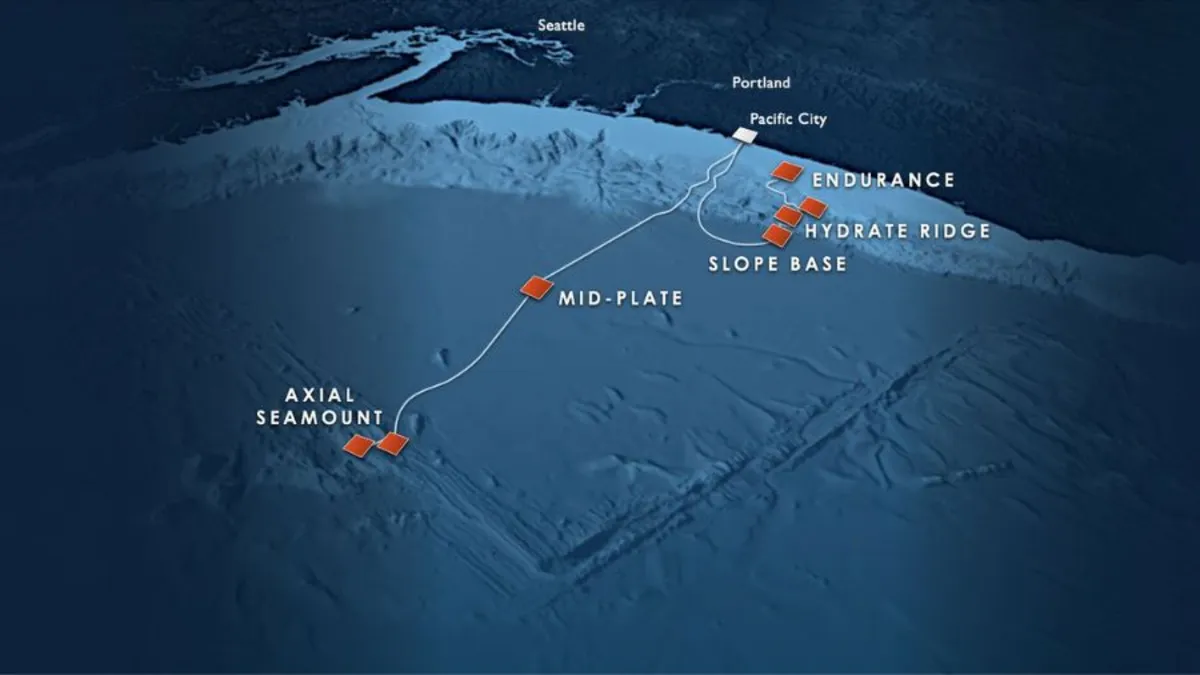
An underwater volcano located approximately 300 miles off the coast of Oregon, known as Axial Seamount, is currently exhibiting signs that suggest a potential eruption could be imminent, according to researchers from the University of Washington (UW). This fascinating geological feature lies over 4,900 feet beneath the surface of the Pacific Ocean and rises around 3,600 feet tall. Notably, Axial Seamount has not erupted since 2015.
“Over two-thirds of the Earth’s surface was formed by volcanic eruptions at these mid-ocean ridges,” explained Maya Tolstoy, a marine geophysicist and the Maggie Walker Dean of the UW College of the Environment. “The volcano is formed by these really fundamental processes that shape our planet.” Located on the Juan de Fuca Ridge, Axial Seamount is classified as a hotspot—an area in the Earth’s mantle where hot plumes of molten material ascend into the crust, as described by the UW College of the Environment.
Researchers at UW have identified two critical indicators that suggest an eruption may be on the horizon: the inflation of the volcano due to magma buildup beneath its surface and an increase in the frequency of earthquakes originating from below the seafloor. William Wilcock, a professor in the UW School of Oceanography, stated, “Over time, the volcano inflates due to the buildup of magma beneath the surface. Some researchers have hypothesized that the amount of inflation can predict when the volcano will erupt, and if they’re correct, it’s very exciting for us.” He further noted that Axial Seamount has already inflated to levels comparable to those before its last three eruptions, indicating it could erupt at any moment if the hypothesis holds true.
Fortunately, an eruption from Axial Seamount is not considered dangerous. The volcano's depth and distance from shore mean that residents are unlikely to feel or notice any eruptions. The UW has reassured Pacific Northwest residents that they need not worry about an eruption triggering a major earthquake or tsunami. Deborah Kelley, another professor in the UW School of Oceanography, emphasized, “Three-quarters of all of the volcanic activity on Earth takes place at mid-ocean spreading centers. But people have never directly witnessed an eruption along this mountain chain, so we still have a lot of unanswered questions.”
In light of the potential for an eruption, UW researchers are preparing to study the unique habitats that volcanoes like Axial Seamount create for marine life. The volcano is home to a diverse array of species, including various microbes and marine animals that thrive near its hydrothermal vents. These vents act as natural “underwater hot springs,” where seawater seeps deep into the seafloor, is heated by magma, and then expelled back into the ocean in superheated, mineral-rich plumes. Remarkably, many of these sea creatures utilize dissolved volcanic gases as an energy source instead of relying on sunlight.
As researchers at the University of Washington continue to monitor Axial Seamount, the potential for a volcanic eruption will remain a topic of keen interest both scientifically and for the local community. Understanding the dynamics of this underwater volcano is crucial not only for predicting eruptions but also for exploring the unique ecosystems that thrive in such extreme environments.